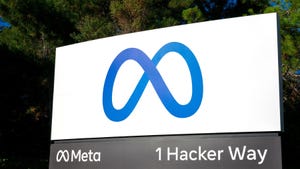
Insight and analysis on the data center space from industry thought leaders.
Driving Business Success through 'Open Group Architecture' FrameworkDriving Business Success through 'Open Group Architecture' Framework
While The Open Group Architecture Framework (TOGAF) meets the requirements for any current enterprise's architecture methodology, there are some unique aspects of this service which make it the framework of choice for a multitude of businesses, writes Edward Jones of Firebrand Training.
June 7, 2013
Edward Jones is a technical writer for a provider of TOGAF 9.1 certification, Firebrand Training. Edward writes on a number of IT related topics including how to guides, industry trends plus the latest news and reviews.

Ed-Jones-tn-1
ED JONESFirebrand Training
Because business in the modern world has never been more competitive, a focus on global communications and the need to streamline current operational practices, effective and efficient business operations are tantamount to success, or perhaps even survival. The importance of translating business vision and strategic templates into reality has never been greater, so the proper implementation of a means to manage such goals has become a requirement for many organisations. Thus, the adoption of an effective model for enterprise architecture should be a concern for small and large enterprises alike.
If you are unfamiliar with the practice of enterprise architecture, it is perhaps time we bring you up to speed for the sake of your business. Enterprise architecture is the practice of aligning technology and business strategy to achieve company goals and promote development of the organisation. Enterprise architecture is applied using a “framework”, which defines the structure, views and objects of said architecture.
As there are many existing frameworks to choose from, in and of itself the process may appear quite daunting. However, one of the most widely utilised systems currently available is called TOGAF, which stands for The Open Group Architecture Framework. Let's first define the unique characteristics of this framework and then examine a few of the key reasons why it has become one of the most popular choices for internal information management.
What is TOGAF?
TOGAF is an acronym for The Open Group Architecture Framework. This architecture is centered on the domains of business, data, application and technology. Like any framework, the goal of TOGAF is to improve a company's approaches to planning, enacting and governing an internal information structure and therefore expediting the dissemination of information within this organisation. TOGAF incorporates such factors as:
Providing a common business vocabulary
Incorporating a list of operational standards
Providing a set of tools to be used inter-departmentally
Supplying the "building blocks" for effective information management
While TOGAF meets the requirements for any current enterprise's architecture methodology, there are some unique aspects of this service which make it the framework of choice for a multitude of businesses.
The Benefits of TOGAF
As mentioned earlier, there are numerous current frameworks within the information architecture industry, therefore defining the correct choice may be difficult. This is especially true when taking into account any budgetary concerns. Although the merits of each of these operating systems cannot be denied, what makes TOGAF specifically desirable is that it is built on open-source standards. This allows companies to utilise this framework for free. As the principle of lean operations comes to the forefront of many business models during these trying economic times, this aspect alone makes TOGAF a very attractive choice as opposed to proprietary systems, which come at a cost.
Another aspect not to be ignored is the scope of operations and support that TOGAF enjoys. As open-source software, the user community, which supports and shapes current paradigms, is robust. This addresses one of the most common flaws of enterprise architecture to-date; the inability to acquire qualified personnel who are cognisant of how a specific company performs its operations. Hence, these support levels are unrivalled in the industry.
Additionally, this framework has been steadily evolving since the mid 1990's. This allows the system to have incorporated all of the most effective practices that have proven their viability over time while having excised those which have not given the optimum results. Other frameworks may still be experimenting with different or yet-to-be-proven methodologies; with TOGAF you have a documented history of success and therefore confidence in application.
More on the next page
Another benefit of TOGAF is it’s ability to be implemented into a company's ITIL structure. By incorporating TOGAF into a current Information Technology and Infrastructure Library, internal processes can be streamlined and a relatively seamless adoption can take place. This avoids the possibility of hindering any on-going operations while maintaining departmental accountability and communications.
Finally, the latest version of TOGAF 9.1; launched in 2011, incorporates additional features including a greater number of templates, elimination of disparities between different approaches, greater emphasis on security architectures and a more business-centred approach. This makes the latest rendition even more effective than its direct predecessor.
The Framework of Choice
For these aforementioned reasons, TOGAF has become the model of choice for countless organisations worldwide. What we can begin to witness here is a paradigm shift in the means by which a business can more easily handle its information technology needs. Notwithstanding the main cost-saving benefits of TOGAF, the fact that is built around open-source technology means that it will constantly evolve and meet the changing demands of the business consumer. This directly reflects the changing approach that many business models have already adopted; flexibility over the more formal and discreet operational templates.
This ductile attitude will most likely cause TOGAF to further evolve as changing business and informational practices dictate. Nonetheless, these are only a few of the reasons why TOGAF has already been shown to be beneficial for a large number of businesses. This trend is only expected to continue into the future.
Implementing TOGAF
With that in mind, perhaps it’s time you considered the implementation of TOGAF in your organisation? But how you ask? The quickest and most effective way would be to employ an enterprise architect with a TOGAF certification. An enterprise architect is the individual responsible for the application of a framework, with a certification in TOGAF they have a grounding in the methodologies of TOGAF and how best to implement them. Alternatively, you can look to train your existing IT Manager, for which are a multitude of options here.
Classroom Learning – although the more expensive option, it is often the best. Interaction with an instructor and a structured environment are conducive with improved learning and greater success in passing examinations. Firebrand offer a 3 day course for the current TOGAF 9.1 certification which is all inclusive with exams.
Online Learning – a popular option due to reduced cost and flexible learning. This method of training can be delivered anywhere there is a computer and allows the individual to go at his own pace. The Open University and Goog e-Learning are purveyors of the course.
Self-Study – for those with self-discipline and access to Amazon, there are a range of study guides offered by the Open Group.
So what are you waiting for? Start thinking about enterprise architecture and TOGAF before your organisation goes the way of the dinosaur.
Industry Perspectives is a content channel at Data Center Knowledge highlighting thought leadership in the data center arena. See our guidelines and submission process for information on participating. View previously published Industry Perspectives in our Knowledge Library.
About the Author
You May Also Like









